
The emergence of Web3 has ushered in a new era of possibilities for marketers. Web3, with its decentralized, blockchain-powered architecture, promises to revolutionize how brands interact with their audiences, and one of the most intriguing avenues it offers is the integration of virtual worlds and metaverses into marketing strategies.
Gone are the days of passive advertising and one-sided communication. In this Web3 era, marketing becomes an immersive and participatory experience, where you can establish authentic connections with your customers. Virtual worlds and metaverses, once confined to the realms of science fiction, are now very much a reality, and they are transforming the marketing landscape in unprecedented ways.
This blog post sets out on a journey to explore the immense potential of virtual worlds and metaverses in Web3 marketing. We’ll dive into the core concepts of Web3, the rise of virtual worlds, and how they have become essential components of the metaverse experience. Along the way, we’ll uncover the unique marketing opportunities they present and the challenges that come with this uncharted territory. Seatbelts on?
Understanding Web3 and its Impact on Marketing
Web3 represents the next evolution of the internet, redefining the way we interact, transact, and participate online. At its core, Web3 is characterized by decentralization, blockchain technology, and user-centric principles. Unlike its predecessor, Web2, which relied on centralized platforms and data ownership by tech giants, Web3 empowers users with control over their data and digital assets.
Key Features of Web3 include:
- Decentralization: Web3 operates on decentralized networks, eliminating single points of control and enhancing security, transparency, and censorship resistance.
- Blockchain Technology: The underlying blockchain architecture ensures trust, immutability, and provenance of data, enabling secure transactions and tokenization of digital assets through NFTs.
- User Ownership: Users have ownership and control over their data, identities, and digital creations, fostering a more equitable and empowered online experience.
As a result of this, doing marketing in Web3 offers some enticing benefits:
- Enhanced User Engagement: Immersive experiences and ownership of digital assets deepen user engagement and loyalty.
- Increased Transparency: Blockchain’s transparency builds trust and authenticity, crucial in modern marketing.
- Novel Marketing Opportunities: Virtual worlds and metaverses provide innovative spaces for creative marketing campaigns.
- New Revenue Streams: NFTs and tokenization offer opportunities for you to monetize digital assets and reward user participation.
These features also come with challenges, such as:
- Education and Awareness: Adoption of Web3 marketing requires educating both brands and users about the technology’s potential.
- Regulatory Uncertainty: As Web3 evolves, regulatory frameworks may present challenges and require careful navigation.
- Technical Complexity: Integrating blockchain technology and managing decentralized systems may be challenging.
Defining Virtual Worlds and Metaverses in the Context of Web3
Virtual worlds and metaverses are immersive digital environments where users can interact, socialize, and create within a shared virtual space. In the context of Web3, these virtual realms are revolutionized by blockchain technology and decentralized principles, offering users true ownership and control over their digital assets and identities.
Virtual worlds are computer-simulated environments that replicate real-world or fantasy settings. Users, represented by avatars, can navigate and explore these 3D spaces, interacting with objects, and other users while engaging in various activities. These worlds often allow for customization, enabling users to personalize their avatars, homes, and virtual possessions. Virtual worlds are typically persistent, meaning they exist and evolve continuously, even when users log off.
In Web3, virtual worlds gain new dimensions through the integration of blockchain and NFTs. Users can buy, sell, and trade digital assets as unique, provably scarce items using blockchain technology. This provides a sense of true ownership and value to virtual goods, making the virtual economy more immersive and sustainable.
The term ‘metaverse’ refers to a collective interconnected virtual space, comprising numerous virtual worlds, environments, and experiences. It is a shared, persistent, and synchronous digital universe where users can seamlessly transition between different virtual realms. The metaverse transcends the boundaries of individual virtual worlds, creating a massively interconnected network where users can carry their assets and identity across various platforms.
In the context of Web3, the metaverse is underpinned by decentralized protocols and blockchain technology, allowing for a unified and interoperable experience. This fosters the creation of a user-driven metaverse, where participants can contribute to the development and governance of the virtual universe.
Examples of Popular Virtual Worlds and Metaverse Platforms
Decentraland
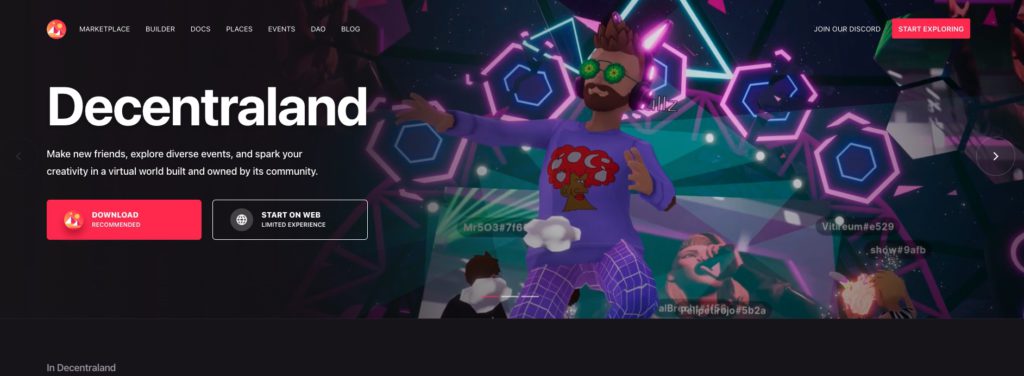
Decentraland is a leading decentralized virtual world built on the Ethereum blockchain. Users can explore, create, and monetize content and applications in a vast, user-owned metaverse. The platform allows users to buy virtual land as NFTs, giving them complete ownership and control over their parcels within the virtual world.
Roblox
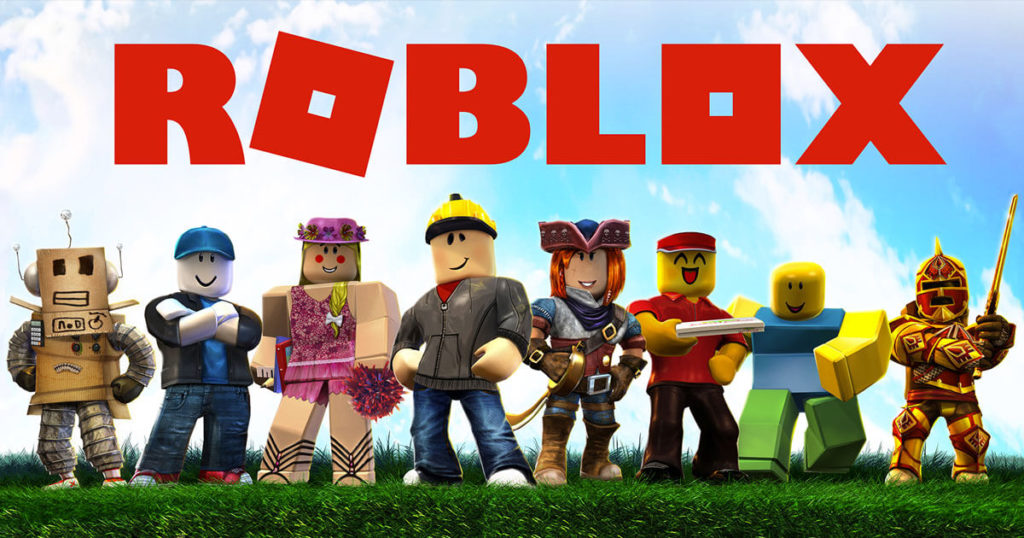
Roblox is a massively popular virtual gaming platform and metaverse that allows users to create and play games developed by other users. It boasts a vast library of user-generated content and provides a social experience for players to connect and interact with friends in a virtual environment.
Voxels
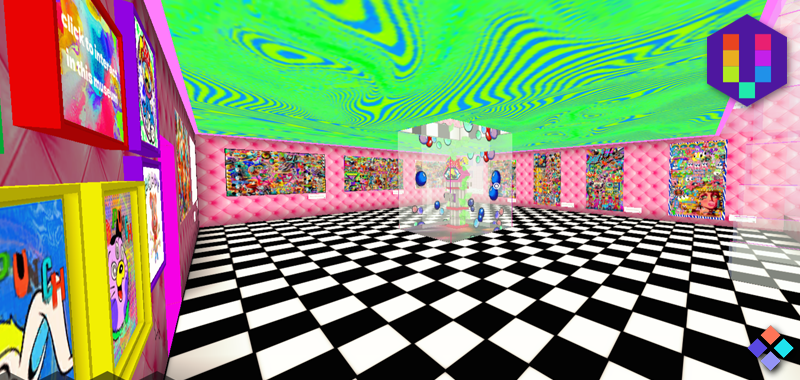
Voxels is a virtual world that operates on the Ethereum blockchain, focusing on artistic expression, creativity, and social interaction. Users can purchase and build on parcels of land, showcasing their artworks and unique creations as NFTs.
Somnium Space
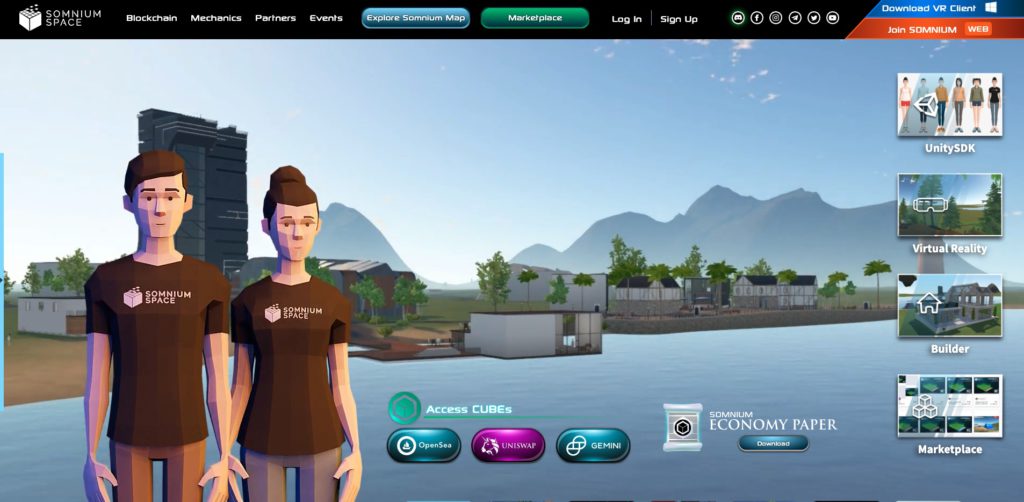
Somnium Space is an open, blockchain-based virtual reality metaverse. It offers a persistent, user-driven experience where participants can explore, socialize, and create in a vast virtual environment.
Second Life
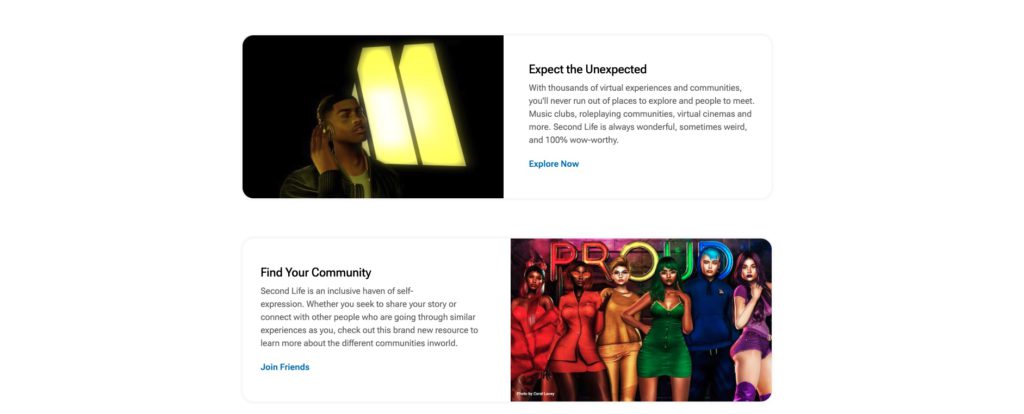
Though not inherently Web3-based, Second Life is an early example of a virtual world where users can build, trade, and socialize. It demonstrates the potential of user-generated content and virtual economies, which have influenced the development of modern Web3 metaverses.
These examples represent just a fraction of the rapidly expanding virtual world and metaverse landscape within the context of Web3. As the technology and adoption of Web3 continue to advance, we can expect to see more innovative and interconnected virtual experiences that redefine how we engage with the digital realm.
How Virtual Worlds Enable Immersive Marketing Experiences
Virtual worlds offer a captivating canvas for you to create immersive marketing experiences that go beyond traditional advertising methods. These digital realms provide an unprecedented level of interactivity, personalization, and user engagement, making them powerful platforms for you to connect with your target audiences. Here’s how virtual worlds enable immersive marketing experiences:
- Authentic Brand Presence: In virtual worlds, you can establish a tangible and authentic presence, represented by your own virtual spaces or stores. This presence allows your users to interact directly with your products, services, or experiences, fostering a deeper connection and emotional attachment.
- Interactive Product Demonstrations: Virtual worlds enable interactive product demonstrations in three-dimensional spaces. Users can explore, manipulate, and test products virtually, gaining a realistic understanding of your features and benefits.
- Creative Storytelling: You can employ creative storytelling techniques within virtual worlds to communicate your brand values, narratives, and missions effectively. Through interactive storytelling, your users become active participants in your narrative, enhancing engagement and memorability.
- Engaging Virtual Events: Host virtual events, product launches, or conferences within these digital environments. Such events can be attended by a global audience, fostering inclusivity and eliminating geographical barriers. Attendees can network, participate in activities, and experience your brand in unique ways.
- Personalized User Experiences: Virtual worlds can capture user data and preferences, enabling personalized experiences tailored to individual users. This level of personalization enhances user satisfaction and strengthens brand loyalty.
- Gamification and Rewards: Gamify your marketing efforts within virtual worlds, incorporating challenges, quests, and rewards for user participation. This approach incentivizes engagement and encourages users to explore different aspects of the virtual environment.
- Virtual Commerce and NFTs: Virtual worlds are fertile grounds for digital commerce, where you can sell virtual goods, exclusive NFTs, or limited-edition products. The scarcity and ownership associated with NFTs can increase the perceived value of these items, driving interest and sales.
- Immersive Advertising Campaigns: Instead of traditional banner ads, virtual worlds offer opportunities for you to integrate advertising in more organic and immersive ways. This can include in-world billboards, sponsored events, or product placements within virtual experiences.
- Social Media Integration: Virtual worlds often have social features, allowing users to share their experiences and interact with others. Leverage these social aspects to facilitate user-generated content, word-of-mouth marketing, and community engagement.
- Measurable Analytics: Virtual worlds provide valuable data on user behavior, interactions, and engagement. Analyze this data to measure the effectiveness of your marketing campaigns and make data-driven decisions for improvements.
Web3 Marketing Strategies in Virtual Worlds and Metaverses
NFTs (Non-Fungible Tokens) and Their Role in Virtual Marketing Assets

- NFTs for Unique Virtual Items: NFTs enable you to create unique virtual items, such as digital art, limited-edition products, or virtual collectibles. These one-of-a-kind assets can be bought, sold, and traded within the virtual world, driving user engagement and brand loyalty.
- Exclusive Access and Benefits: Use NFTs to offer exclusive access to virtual events, premium content, or special promotions. Owning certain NFTs can grant users additional benefits, fostering a sense of exclusivity and value.
- Provably Scarce Campaigns: Run provably scarce marketing campaigns using NFTs, offering a limited number of virtual items or experiences. Scarcity enhances perceived value and encourages users to actively participate in marketing activities.
Leveraging Blockchain Technology for Authenticity and Provenance
- Authenticity of Digital Assets: By leveraging blockchain, you can verify the authenticity of digital assets within the virtual world. Users can be assured that the virtual items they own are genuine and not replicas.
- Provenance and Ownership: Blockchain technology provides an immutable record of ownership for virtual items. Offer transparent provenance, assuring users that their virtual possessions are unique and legitimately owned.
- Anti-Counterfeit Measures: Blockchain’s tamper-resistant nature helps combat counterfeit virtual goods. Users can confidently engage with branded content, knowing they are interacting with legitimate products and experiences.
Creating Branded Virtual Experiences to Engage Users
- Immersive Brand Spaces: Design immersive virtual spaces or environments that showcase your products, values, and narratives. Users can explore and interact with branded elements, deepening their connection to your brand.
- Interactive Quests and Challenges: Create interactive quests or challenges that users can participate in within the virtual world. These activities can be centered around your offerings; reward users with NFTs or exclusive content.
- Collaborative Events: Organize collaborative events where users can contribute to the development of virtual experiences or content. Involving the community fosters a sense of ownership and strengthens brand-user relationships.
Virtual Events and Product Launches in Metaverses
- Immersive Product Launches: Launching products or services in a virtual world allows for immersive and experiential product demonstrations. Users can engage with your brand and its offerings in an interactive manner.
- Global Reach and Accessibility: Virtual events in metaverses eliminate geographical barriers, enabling you to connect with a global audience in real-time. This inclusivity increases the reach and impact of product launches.
- Social Media Amplification: Virtual events and product launches can generate significant social media buzz. Encourage attendees to share their experiences on social platforms, amplifying your brand visibility and engagement.
Gamification and Rewards to Enhance User Engagement
- Virtual Rewards and Incentives: Implement gamification elements within the virtual world to incentivize user engagement. Virtual rewards, badges, or achievements can motivate users to participate in brand activities.
- Interactive Mini-Games: Integrate interactive mini-games related to your brand or product. These games can be enjoyable and engaging, encouraging users to spend more time interacting with your brand.
- Loyalty Programs: Implement virtual loyalty programs where users can earn points, tokens, or NFTs for their continued engagement with your brand. These rewards build long-term loyalty and retention.
Building a Presence in Virtual Worlds and Metaverses
1. Identifying the Right Metaverse Platform for Your Brand
- Research Metaverse Options: Start by researching various metaverse platforms to find the one that aligns best with your brand’s objectives and target audience. Consider factors such as user demographics, platform popularity, and technical capabilities.
- Assess User Engagement: Look for metaverse platforms with active user engagement and a thriving community. A platform with a large and engaged user base will offer better opportunities for brand visibility and interaction.
- Analyze Features and Tools: Evaluate the features and tools offered by different metaverse platforms. Choose a platform that allows for customization, easy content creation, and seamless integration of your brand’s assets.
2. Understanding the Community and Culture of the Chosen Virtual World
- Observe User Behavior: Spend time exploring the chosen virtual world to understand user behavior, interests, and interactions. Observe how users engage with other brands and each other to gain insights into the community culture.
- Engage and Participate: Become an active participant in the virtual world’s community. Interact with users, attend events, and join discussions to build relationships and learn about the community’s values and preferences.
- Respect the Culture: Each virtual world has its unique culture and norms. Respect the existing community dynamics and avoid intrusive or disruptive marketing practices that could alienate users.
3. Developing a Coherent Brand Identity in the Metaverse
- Consistency Across Platforms: Maintain consistency in your brand’s visual identity, messaging, and tone of voice across both physical and virtual channels. This coherence helps users recognize and trust your brand in the metaverse.
- Unique Virtual Branding: Tailor your brand’s virtual presence to fit the aesthetics and user experience of the metaverse. Create virtual assets, avatars, or spaces that resonate with users while staying true to your brand’s essence.
- Seamlessly Integrate Virtual and Physical: Integrate your virtual world presence with your physical marketing efforts. Promote virtual events on social media, include virtual experiences in marketing campaigns, and bridge the gap between the two worlds.
4. Tips for Marketing Effectively Without Being Intrusive
- Add Value to the Experience: Focus on providing value to your users in the virtual world. Offer entertaining, informative, or interactive content that enhances their virtual experience rather than being overly promotional.
- Native Advertising: Embrace native advertising approaches that seamlessly blend with the virtual environment. Create branded experiences or events that feel natural within the metaverse setting.
- Community Collaboration: Engage the community in the creation of branded content or experiences. Co-create with users, gather feedback, and involve them in shaping your brand’s virtual presence.
- Permission-Based Marketing: Respect user privacy and seek permission before collecting data or sending marketing messages. Implement opt-in mechanisms for users to choose to receive communications from your brand.
- Avoid Overwhelm: Strike a balance between marketing initiatives and respecting users’ space. Avoid excessive advertising or spam-like behavior that could overwhelm users and drive them away.
Successful Web3 Marketing Campaigns in Virtual Worlds
Nike's Virtual Sneaker Drop in Decentraland
In collaboration with Decentraland, Nike organized a virtual sneaker drop to launch a limited edition NFT sneaker collection. Users could access a virtual Nike store within Decentraland and purchase the NFT sneakers using cryptocurrency. The event garnered immense attention and participation, with users excitedly queuing up in the virtual store to secure their exclusive digital sneakers. This innovative campaign successfully combined the allure of collectible NFTs with the brand’s iconic product, driving engagement and boosting brand visibility in the metaverse.

Coca-Cola's Virtual Concert in Roblox
Coca-Cola partnered with Roblox to host a virtual concert experience featuring a popular artist. Players within Roblox could attend the live virtual concert, enjoy the music, and engage with branded content during the event. Coca-Cola created in-game quests and rewards, incentivizing users to interact with the brand throughout the experience. The concert attracted millions of players and generated extensive social media buzz, showcasing the potential of virtual worlds as a stage for large-scale, immersive marketing events.
Conclusion
The evolution of Web3 and the emergence of virtual worlds and metaverses have transformed the marketing landscape, opening up a realm of boundless possibilities for your brand to connect with your audiences in more immersive and engaging ways. This article has explored the potential of Web3 marketing in virtual worlds, shedding light on how you can leverage this innovative paradigm to stay at the forefront of modern marketing.
Web3 marketing introduces a user-centric approach, giving users true ownership and control over their digital assets and identities. Within virtual worlds, you can build authentic and interactive experiences, enhancing user engagement and fostering brand loyalty. The integration of NFTs and blockchain technology adds value, uniqueness, and provenance to virtual marketing assets, enriching the user experience.
Understanding the community and culture of the chosen virtual world is pivotal in crafting successful marketing strategies. By observing user behavior and actively engaging with the community, you can create tailored experiences that resonate with your audience and respect the nuances of the virtual environment.
Developing a coherent brand identity in the metaverse ensures consistency and recognition across both physical and virtual realms. Seamless integration of virtual and physical marketing efforts bridges the gap between these worlds, enabling you to create a unified and holistic brand experience.
As you embark on your journey into the metaverse, it is essential to approach marketing strategies with authenticity, creativity, and respect for users’ space. Non-intrusive marketing practices, value-driven content, and community collaboration form the foundation of successful Web3 marketing campaigns.





